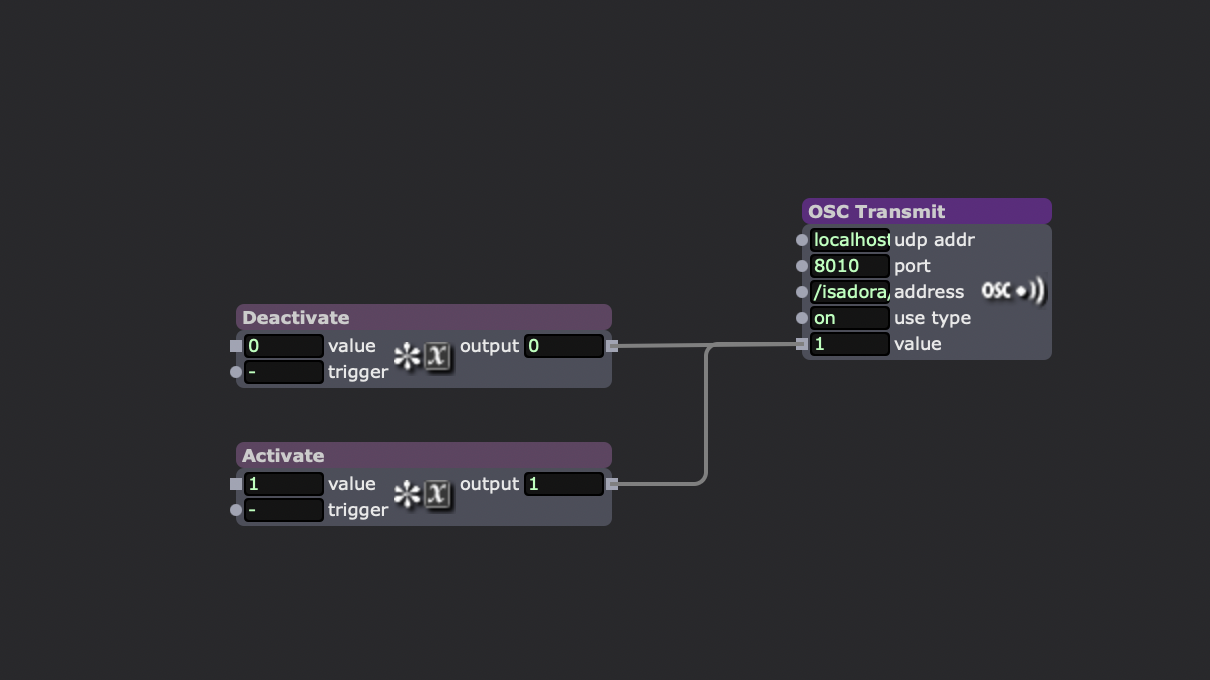You might have success with "SpoutLink".
It was created for s different purpose but should do the job for you. It will receive from Unity, then output as "SpoutLink" which you can show on your video wall. If you have Isadora with Spout output running at the same time, SpoutLink will instantly switch to it when the Unity game closes.
@mark_m Hi Mark,
I don't know how much distance you need but I have found and used 125 feet (38 meters roughly) fiber-optic HDMI cables that do transport also the blackmagic camera controls from an HDMI Atem Extreme pro ISO. I never needed more.
@Armando Hi Armando I hope you're well.
I've been using a few of these devices for interactive installations within my teaching and research. Essentially they're a replacement for my Kinect cameras which stopped working correctly.
I wanted some sensors for 3D depth capture with POE - I settled on the OAK-D, though if any of these new tracking and depth sensing cameras had plug and play connectivity with Isadora I'd have been interested. Maybe the new Pythoner actor can come to the rescue?!
Currently I'm using Touchdesigner to process the data from OAK-D and I then send the results back to Isadora via NDI.
Hopefully in the future there will be a way to do this directly within Isadora, like with the Kinect camera and the OpenNI Tracker actor - if anyone knows how, please let me know!
Best wishes,
Simon
@paz said:
Luxonis Oak-D camera (POE),
Hi simon, just curous. hoe he you youse this camera and what fo? I don't mean to pry...
That works perfectly!
I guess I was clicking on the quad instead of its checkbox, trying to add an OSC control.
Thanks, @jandraka
I have a Unity game that I output to my video wall via Spout. I'd like to have Isadora play a nice effect on the walls whenever the signal from Unity stops, and in particular at the beginning as a sort of elevator music waiting for the game to start outputting. Is there any way to detect if spout is getting a signal or not? Maybe an actor between spout and the projector that can tell if something is playing?
You are not wrong in finding the routing control string formatting confusing. I have found the help text has a number of errors.
I have tested in Isadora 4, and can confirm the volume controls work, but require a format that the help text is incorrect about.
Here is a formatting string for the Text Formatter:
"1:1@" P1 "; 2:2@" P2
For control by percentage the % sign can NOT be used. The string format expected is: 1:1@0; 2:2@100
Note also, that the separator is a semi-colon not a comma as stated in the help.
I am entering these discrepancies into our bug tracker, and will ensure they are fixed for the next release.
A feature, you may not have noticed is that if you use the routing widget (click the actor grid Icon) and adjust the volume per channel there, the actor will create the input router string. This is the easiest way to get a working reference string.
@juriaan @fred @woland @bonemap @everyone I hope you don't mind me bumping this thread, I found the information extremely useful, but seeing as it's been 8 years since this has been discussed I wonder what new developments I should consider.
I primarily work in an education setting, and I would like to be able to create my own local network for wired and wireless access.
I'm using Mac computers (Isadora), Arduino and Pipo interfaces, Birddog cameras (controlled via the VISCA PTZ actor), Luxonis Oak-D camera (POE), audio sent over Dante, plus NDI and OSC.
Can I purchase a router with multiple poe ethernet ports which also offers wireless connection with good range, or do I invest in a wireless router and a separate switch? Hoping for your recommendations.
Many thanks for everyone's help.
Best wishes, Simon
@reload2024 Yup, managing EDID is fun. The high-end media servers (disguise, Pixera, GreenHippo) all manage these with additional hardware and software (one company uses a mini Raspberry Pi hidden away in their cases just to manage EDID).
It sounds like you need/should keep the Mosaic on then. I would use the tools within Isadora to achieve what you need. Might be worth making a template to map out the outputs - if that makes sense? All you are doing really is managing the pixels and where they go. Keep us posted, happy to help if/when I can.
Hi,
It's the same process: right-click on the checkbox, select "Add Control," choose "OSC," then "Learn," and send the OSC message from Isadora. Sending 0 or 1 will activate or deactivate the quad.


Best regards
Javi